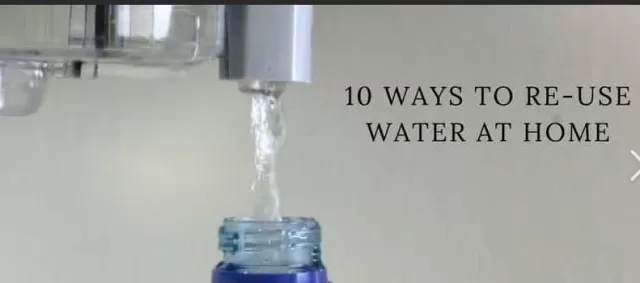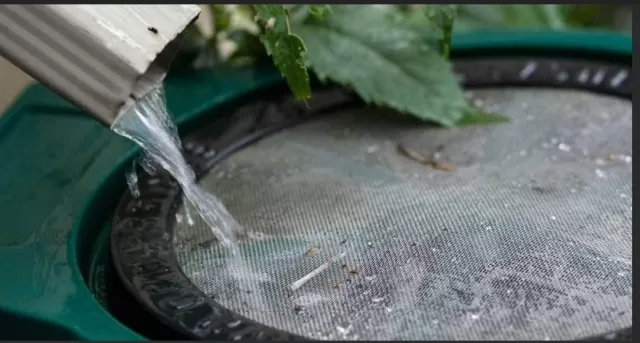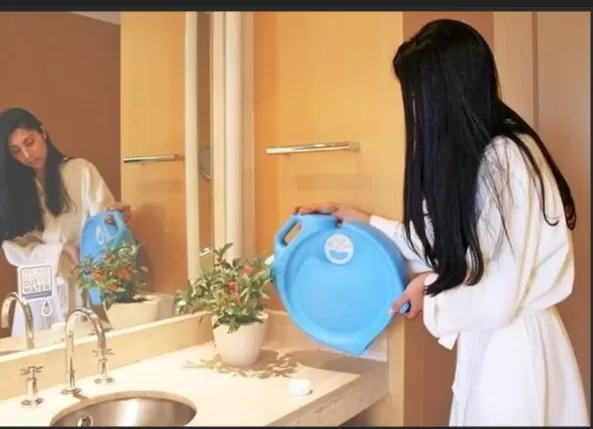Sustainable Water Reuse at Home: Discover How It’s Done. You’re absolutely right that we often waste water in our daily routines.
By eliminating wasteful habits like leaving the water running unnecessarily, we can make a significant difference. However, if you’re already conscious of conserving water and want to further reduce your usage, reusing water in and around your house is a great approach. Here are some ways you can incorporate water reuse into your eco-friendly efforts:
Preserving Water: An Invaluable Asset

People residing in areas of the United States where water scarcity is a concern are well aware of the significance of conserving this invaluable asset.
On an average basis, American households consume approximately 88 gallons of water daily, a substantial amount of which is squandered due to leaks or inefficient practices. Fortunately, by implementing a few intelligent adjustments, we can minimize wastage, contribute to environmental well-being, and safeguard this progressively diminishing resource.
Installing a Gray Water System for Water Reuse
A gray water system offers an effective solution for recycling wastewater from various plumbing sources, excluding toilets, and repurposing it within the household.
It’s important to note that toilet water, known as black water due to its contamination with human waste, is not included in the gray water system. Gray water, while unsuitable for drinking, can safely be utilized for other purposes. Implementing a gray water system allows a significant portion of a household’s water usage to be recycled, benefiting activities such as plant irrigation or toilet flushing. While incorporating a gray water system may be more challenging in older homes, it can be readily integrated into new construction projects. Costs can vary, but a basic whole-house system typically ranges up to approximately $2,500.
Installing a Rain Barrel for Water Conservation and Reuse

One of the simplest methods to conserve and repurpose water is to set up a rain barrel, which collects rainwater flowing from your home’s gutters.
The installation process is straightforward: Position the rain barrel in close proximity to a downspout and connect a diverter to redirect water from the downspout into the barrel. It’s advisable to raise the barrel on a wooden stand or cinder blocks to facilitate easy access to the spigot, typically located near the base of the barrel.
Once the rain barrel is in place, you can utilize the collected water to nourish your thirsty garden plants, thereby reducing your reliance on municipal water sources.
Repurposing Pasta Water
While various sources may suggest reusing leftover pasta water for household plants, it is not recommended, particularly if you follow the proper method of boiling pasta with ample salt.
However, you can still find uses for this briny liquid by employing it to thin sauces or steam vegetables as a flavorful side dish. It is important to note that when reusing pasta water, it should be done immediately. Due to its high starch content, the water can spoil quickly and should not be stored for later use.
Utilize Shower Water Collection

If setting up a gray water system appears complex or exceeds your budget, you can still employ a straightforward do-it-yourself method to collect water: Place a bucket strategically in the shower to capture water that would otherwise go down the drain.
You can then utilize this collected water for watering your houseplants or garden. Additionally, Clean Water collected while waiting for the shower to reach the desired temperature can serve the purpose of washing dishes.
This simple technique allows you to make the most of water that would otherwise go to waste.
*The information is for reference only.